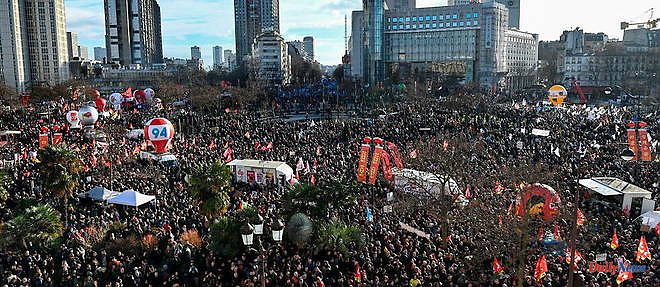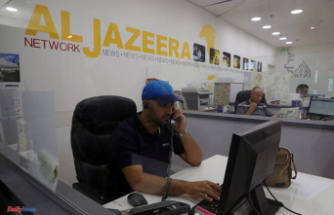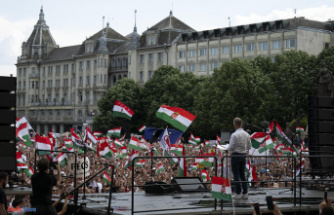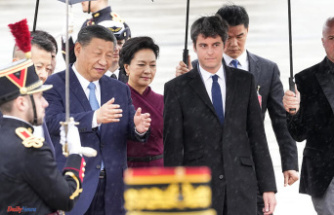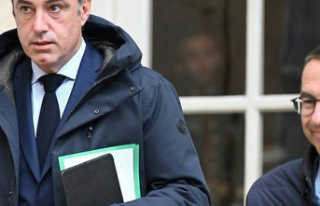Barely 55,000 demonstrators. This is the count of the cabinet Occurrence, commissioned by the media to gauge the success of the Parisian demonstration of January 31 against the pension reform. This is ten times less than what the unions claim (500,000), and less than the police (87,000) with whom they are however often connected. Criticized on its methodology, mocked on social networks, including by Jean-Luc Mélenchon, the firm, a subsidiary of Ifop, defends its counting, carried out using artificial intelligence.
The process is always the same, assures Assaël Adary, general manager and co-founder of Occurrence: a team is placed in a hotel room overlooking the route of the event. They install cameras and sensors there, draw a virtual line intersecting the boulevard, from wall to wall, sidewalks included, and count each demonstrator who crosses this line. Tuesday, they were at the corner of boulevards Raspail and Montparnasse, halfway on the course.
The firm uses proven technology from Eurecam, a company specializing in crowd counting. She "knows how to outline a human being, in contrast to the ground", specifies Assaël Adary. This leads to a first cause of error: artificial intelligence poorly detects individuals in times when the crowd is dense and compact. Occurrence claims to perform manual recounts, frame by frame, in 30-second increments, to correct this data. “Technology has its limits, what matters is having a method in place to correct them. »
Another point raised by critics: what happens to people crossing the virtual line in the opposite direction? They are counted separately, but are neither added nor subtracted from the number of demonstrators. "We've never used that number before," says the general manager, not even to correct back and forth. So, he concedes, "someone who crosses the line three times will be counted three times, because you don't recognize people." Plainclothes police, journalists, onlookers, anyone who crosses the line is counted as a protester.
Old images of BFMTV, which filmed the counting method during a demonstration, are widely relayed on social networks and raise questions. We see a dense crowd passing the virtual line, but a lot of red arrows, as if the software detected people advancing backwards. A simple display far from what is happening under the hood, assures Assaël Adary, "because we can see next to it that the counter is racing much faster than we see green arrows on the screen".
Last pitfall, positioning. The Occurrence firm is based on only one counting point, which does not allow to take into account the demonstrators, who would have left or arrived along the way. "That's a real question: we've always considered protesting to be doing the whole course, but maybe we need to revisit the definition. In general, we always try to place ourselves as high as possible on the course, but we have to find a hotel in the right place. “No figure was communicated for the demonstration of January 19, because the route had been split in the face of the influx, and that Occurrence had not positioned any team on the relief route.
Assaël Adary ensures that the system was validated by several media in early 2018. A demonstration was then fully filmed and recounted several times by hand. "The deviation from our count was 8%. The co-founder invites his detractors to watch a video of the procession of the January 21 demonstration in Paris, and to recount by hand to verify his number (14,000): "Prove us wrong! »
And to recall that the firm's original approach was to offer a figure "which does not belong to anyone, neither to the organizers, nor to the Ministry of the Interior", and which is therefore not subject to political manipulation. . Hence its desire for transparency. “Each time, we invite the organizers to come and count with us, to see how we build this number. They never came. »

